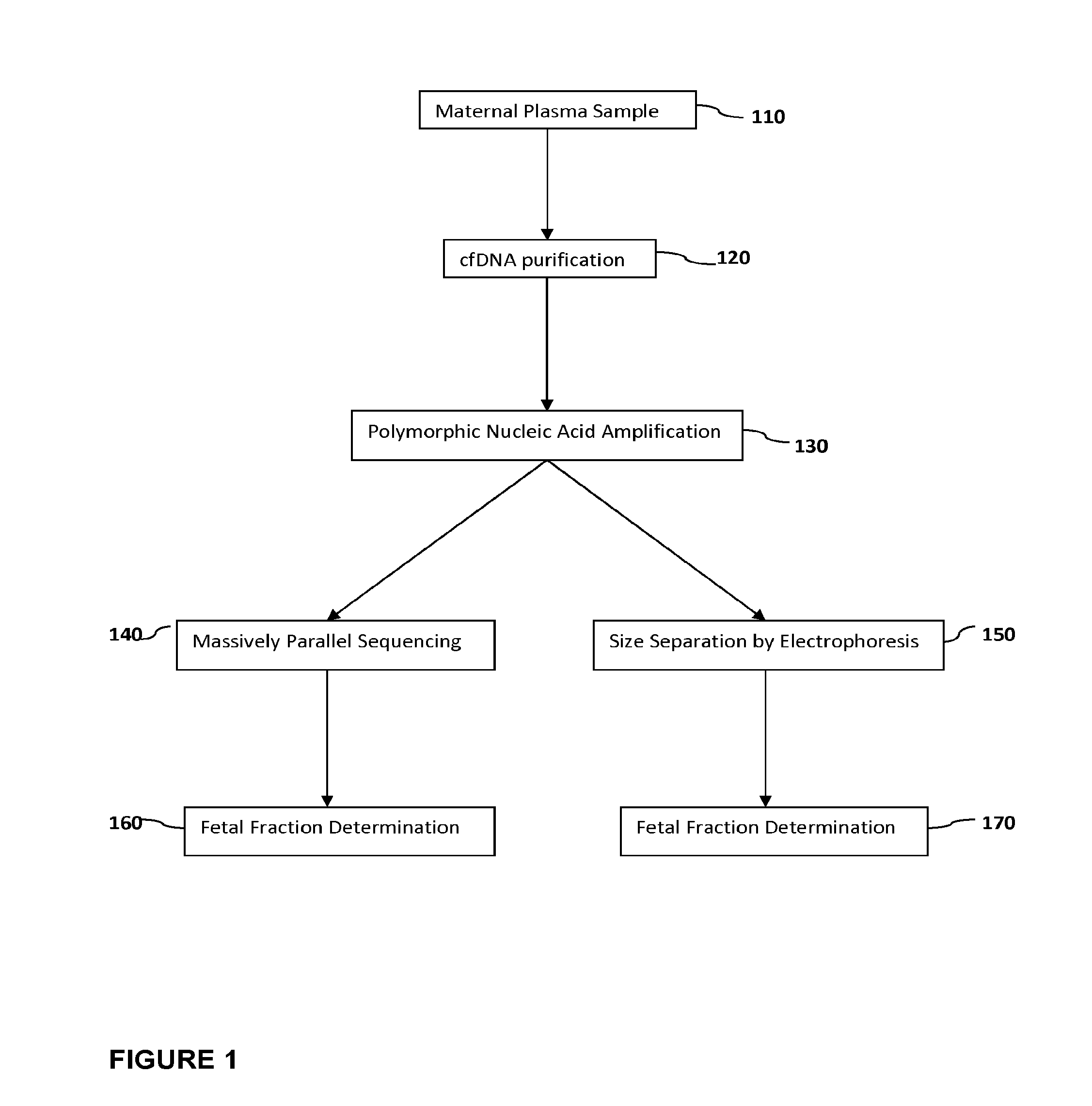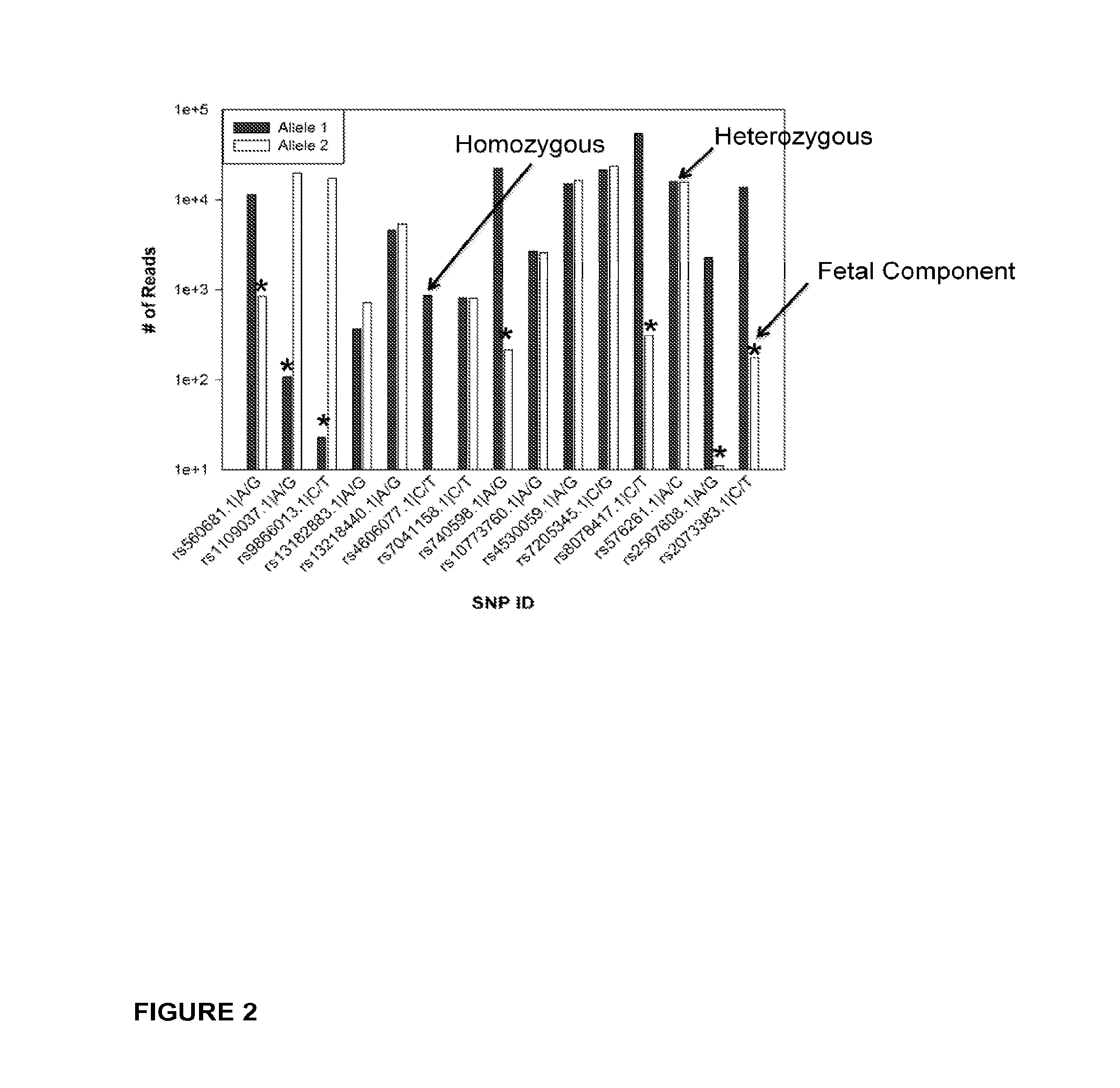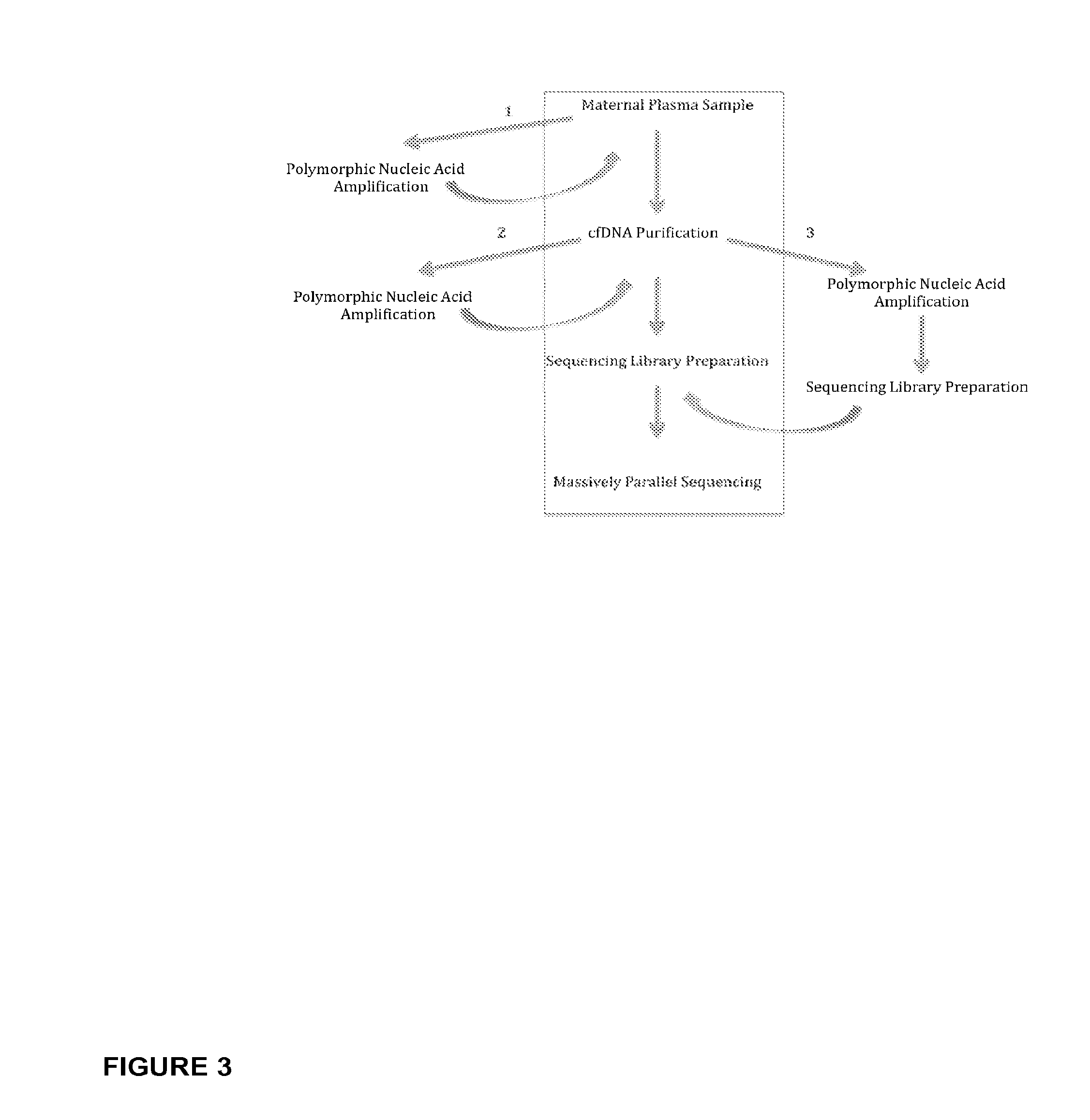Methods for determining fraction of fetal nucleic acids in maternal samples
- Summary
- Abstract
- Description
- Claims
- Application Information
AI Technical Summary
Benefits of technology
Problems solved by technology
Method used
Image
Examples
example 1
Determination of Fetal Fraction Using Massively Parallel Sequencing
Sample Processing and cfDNA Extraction
[0181]Peripheral blood samples were collected from pregnant women in their first or second trimester of pregnancy and who were deemed at risk for fetal aneuploidy. Informed consent was obtained from each participant prior to the blood draw. Blood was collected before amniocentesis or chorionic villus sampling. Karyotype analysis was performed using the chorionic villus or amniocentesis samples to confirm fetal karyotype.
[0182]Peripheral blood drawn from each subject was collected in ACD tubes. One tube of blood sample (approximately 6-9 mL / tube) was transferred into one 15-mL low speed centrifuge tube. Blood was centrifuged at 2640 rpm, 4° C. for 10 mm using Beckman Allegra 6 R centrifuge and rotor model GA 3.8.
[0183]For cell-free plasma extraction, the upper plasma layer was transferred to a 15-ml high speed centrifuge tube and centrifuged at 16000×g, 4° C. for 10 mm using Beckm...
example 2
Determination of Fetal Fraction Using Massively Parallel Sequencing
Preparation of Sequencing Libraries, Sequencing, and Analysis of Sequencing Data
[0185]a. Preparation of Sequencing Libraries
[0186]All sequencing libraries i.e. target, primary and enriched libraries, were prepared from approximately 2 ng of purified cfDNA that was extracted from maternal plasma. Library preparation was performed using reagents of the NEBNext™ DNA Sample Prep DNA Reagent Set 1 (Part No. E6000L; New England Biolabs, Ipswich, Mass.) for Illumina® as follows. Because cell-free plasma DNA is fragmented in nature, no further fragmentation by nebulization or sonication was done on the plasma DNA samples. The overhangs of approximately 2 ng purified cfDNA fragments contained in 40 μl were converted into phospholylated blunt ends according to the NEBNext® End Repair Module by incubating in a 1.5 ml microfuge tube the cfDNA with 5 μl 10× phosphorylation buffer, 2 μl deoxynucleotide solution mix (10 mM each dNT...
example 3
Selection of Autosomal SNPs for the Determination of Fetal Fraction
[0189]A set of 28 autosomal SNPs were selected from a list of 92 SNPs (Pakstis et al., Hum Genet 127:315-324 [2010]) and from Applied Biosystems by Life Technologies™ (Carlsbad, Calif.) at world wide web address appliedbiosystems.com, and validated for use in multiplexed PCR amplification. Primers were designed to hybridize to a sequence close to the SNPs site on the cfDNA to ensure that it be included in the 36 bp read generated from the massively parallel sequencing on the Illumina Analyzer GII, and to generate amplicons of sufficient length to undergo bridge-amplification during cluster formation. Thus, primers were designed to generate amplicons that were at least 110 bp, which when combined with the universal adaptors (Illumina Inc., San Diego, Calif.) used for cluster amplification, resulted in DNA molecules of at least 200 bp. Primer sequences were identified, and primer sets i.e. forward and reverse primers, ...
PUM
| Property | Measurement | Unit |
|---|---|---|
| Volume | aaaaa | aaaaa |
| Volume | aaaaa | aaaaa |
| Volume | aaaaa | aaaaa |
Abstract
Description
Claims
Application Information
 Login to view more
Login to view more - R&D Engineer
- R&D Manager
- IP Professional
- Industry Leading Data Capabilities
- Powerful AI technology
- Patent DNA Extraction
Browse by: Latest US Patents, China's latest patents, Technical Efficacy Thesaurus, Application Domain, Technology Topic.
© 2024 PatSnap. All rights reserved.Legal|Privacy policy|Modern Slavery Act Transparency Statement|Sitemap



